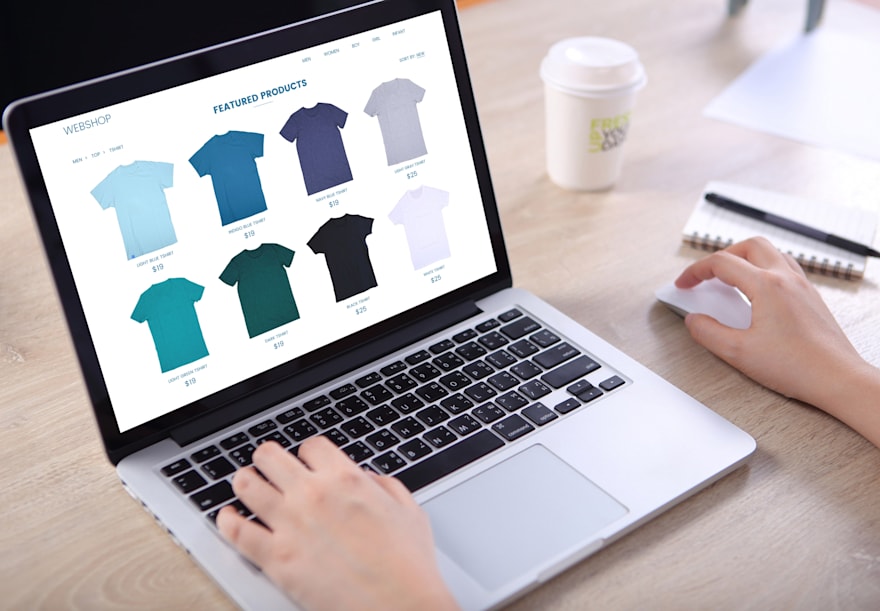What is retail arbitrage on Amazon?
A beginner's guide to retail arbitrage on Amazon
 February 7, 2021
February 7, 2021 8 minute reading
8 minute reading
Want to become a professional Amazon seller ASAP? Maybe you’re dreaming of making a few hundred bucks through a low-risk and low capital strategy. Or maybe you want to start your entrepreneurial journey without making a full-time commitment.
You might consider retail arbitrage.
Retail arbitrage involves purchasing products from retail stores and reselling them at a higher price. You can source products through dropshipping, partnering with existing private-label brands, using the Amazon seller app, and visiting local retail stores.
Yet, some manufacturers or sellers might claim retail arbitrage is illegal which could hold you back. This is not true.
Reselling items you own is not illegal so don’t be afraid to do it yourself.
In this guide, we'll walk through everything you need to know for starting your own Amazon business with retail arbitrage, even with a low initial investment. Whether you’re a seasoned entrepreneur or a complete newbie, you can easily make your first few sales.
Let's get started
Amazon Retail Arbitrage
What is retail arbitrage?
Retail arbitrage involves purchasing products from a retailer at a discount and reselling them at a higher price.
Let’s say you found phone cases at Walmart or Target for $5 each. With retail arbitrage, you can resell them for $25 (market price) on Amazon or eBay and make a profit with minimal effort.
If you purchased 30 units and sold them for $25 each, You'll spend $150 and profit $600!
In a nutshell: This is the retail arbitrage process.
Retail arbitrage seems similar to traditional retailing — but there is one significant difference. A traditional retailer purchases in bulk from manufacturers or wholesale suppliers. Retail arbitrage involves the acquisition of products from other retailers or sellers, and it has low barriers to entry. As a reseller, there are minimal startup costs and it can be profitable.
Note: Profit margins will largely depend on the cost of buying the item from the clearance sale and the resale price on Amazon, eBay, or other online platforms.
Is retail arbitrage legal?
Retail arbitrage involves reselling a product, so you may wonder whether it is permitted by the law.
The good news is retail arbitrage is legal, and it is also acknowledged by Amazon.
According to the US Supreme Court, retailers can’t stop resellers as long as the products are acquired legally.
The exception is counterfeit goods and branded items that are available through authorized resellers. In addition, products under the Amazon Brand Registry require the approval of a manufacturer or private label. If you are caught reselling these goods, Amazon may suspend your account.
How to get started with retail arbitrage on Amazon
Here's the step-by-step retail arbitrage process on Amazon:
Step 1. Create an Amazon seller account
To create an Amazon seller account, you need:
Business email address or Amazon customer account
Chargeable credit card
Government ID (for identity verification)
Tax information
Phone number
Bank account number and bank routing number
Amazon has two selling plans — an Individual plan and a Professional plan. The Individual plan is priced at $0.99 per sale and the Professional plan is priced at $39.99 per month for unlimited sales.
Let’s take a look at the advantages of each plan:
An individual plan is recommended for:
Sellers closing deals for less than 40 items per month
Sellers who do not use add-on programs or selling tools
Sellers who want to keep up-front costs low
Amateur sellers starting their business
A Professional plan is recommended for:
Experienced e-commerce sellers
Sellers closing deals for more than 40 items per month
Sellers using advanced sales tools and add-on programs such as Amazon Business
No need to pressure yourself to pick a specific plan because beginner merchants can choose the individual plan and change to a professional plan anytime.
Step 2. Source products
Finding products for retail arbitrage is like bargain hunting. The goal is to find cheap and quality items in clearance sales from Target, Walmart, or other large retail chains which you can resell with a good profit margin.
Being inexpensive isn’t the only factor you need to consider. You can also use the Amazon Seller app to check how the product is selling.
The Amazon Seller app has a “scan and search” feature which lets you use your phone's camera to scan the barcode of any item. Afterward, you can view the sales rank, current price, customer reviews, competing offers, and estimated profitability.
A step-by-step process for qualifying products for retail arbitrage:
Determine eligibility: Find out whether you’re eligible to resell this item on Amazon and other online platforms.
Assess profitability: Head to the app’s profitability calculator and identify shipping fees, other associated costs, and your estimated profit. Use the “Low Price in New” feature to estimate the product’s profitability against other Amazon sellers.
Consider shipping prices: The cost to ship to Amazon is around $0.25 to $0.30 per pound so you could pay around $2.41 per product for smaller goods and expect an increase for shipping larger or heavier goods.
Consider retail price: Indicate the retail price in the app to determine the profit.
Retail arbitrage expert Ryan Grant uses the following formula to calculate the ROI of a product:
Profit / Cost to Purchase = ROI
He recommends beginners purchase items with a 50% or higher ROI.
Also, purchase products that offer at least $3 total profit. Don't waste time on goods with lower profits because a slight change in the market could diminish your margin.
Step 3. List your products
Create a product listing to start selling online.
Here are the elements of a basic product listing:
Product name - Indicate the name of the product
Product description - Include a compelling description of the item's features and characteristics.
Keywords - Conduct keyword research to find phrases signifying high purchase intent. Place these keywords in the copy to boost your visibility in the marketplace. (Note: We highly recommend using the JungleScout keyword research tool to pinpoint high-converting keywords based on geographic location and cost-per-click.)
On top of this, you must ship the goods to your buyers. While you can do this yourself, we highly recommend using Amazon FBA (Fulfillment by Amazon) services.
4. Amazon retail arbitrage: Pros and Cons
As of December 2019, there are around 112 million U.S. Amazon Prime subscribers which makes Amazon the ideal place to kickstart your retail arbitrage business.
Pros of Amazon retail arbitrage
If you need more convincing, here are some of the biggest pros of engaging in retail arbitrage on Amazon.
Low barrier to entry: Retail arbitrage on Amazon is possible with capital for as low as $100 to $300. You can create an individual Amazon seller account for free, purchase a few items from a clearance sale — and you’re good to go.
Gain a few bucks: Retail arbitrage lets you earn a few bucks by simply reselling goods on the Amazon platform. It's a lot easier than building your own brand or launching a new line of exclusive products.
Learn Amazon: Amateur entrepreneurs can use their retail arbitrage experience as a starting point to sell more items on Amazon or launch their own private label.
Cons of Amazon retail arbitrage
Just like all business models, retail arbitrage also has a few flaws that you must take into account:
Lower margins: Retail arbitrage on Amazon has lower profit margins than buying from direct suppliers. Amazon also requires you to pay a commission for every sale (for Individual plans) and shipping fees (for using Amazon FBA).
Brand regulations: The Amazon Brand Registry protects private labels and brands. Selling an item registered on the platform, without prior approval, could lead to a flagged listing or account suspension.
5. Amazon retail arbitrage FAQs
1. What does FBA stands for?
Fulfillment by Amazon (FBA) is a hassle-free inventory and shipping service offered by Amazon to help business owners sell their products. The Amazon FBA program lets you store your inventory in Amazon fulfillment centers. Amazon will do the heavy lifting for packing or shipping the products, as well as provide customer service.
2. What is Amazon sales rank?
Amazon Best Sellers Rank (BSR) or Amazon Sales Rankis an indicator of how well the item is selling on Amazon. The number is given to a product once a sale is made.
The number is based on the following factors:
Total sales: A product with low sales has a high BSR while products with high sales have low BSR. For instance, an item with a BSR of 5 generates more sales than an item with a BSR of 500.
Past sales: Amazon BSR also considers past sales numbers. lf you managed to sell 10 more units than your competitor in a day, but your competitor has more total sales overall, then you won't overtake your competitors yet.
Similar competitive products: Amazon BSR can fluctuate between product categories. By monitoring your Amazon BSR and its corresponding sales number, you may be able to estimate the sales of your competitors in your product category.
Price fluctuation due to sales and promotions: Amazon BSR is updated per hour based on current and past sales. If you sold 20 products in an hour due to an online sale, you would get a higher BSR than a competitor who only sold 10 units in that same time period.
3. What is Keepa used for?
Keepa tracks the sales rank and price of millions of Amazon product listings. Their data is not completely faultless but it can paint a clear picture of a product’s profitability and market price. A Keepa chart lets you view price history, track the product, and view data based on different time frames.
4. What are Amazon lightning deals?
Products in Amazon's lightning deals are discounted products for around 24 hours or less. Although these sales have lower profit margins, you could profit from selling many items and attract more traffic to your online store.
5. Where are Amazon sponsored ads appearing?
Amazon sponsored ads appear at can appear above, near, or within search results, or even on product detail pages and follow a pay-per-click (PPC) model.
Conclusion
To recap, here are the reasons why retail arbitrage is a good business model:
It has low barriers to entry: All you need to do is to create an Amazon account, find items to sell, and create product listings. No need to create a brand, exclusive product, logos, and other complicated requirements.
Minimal investment: Start small with minimal investment and scale your inventory as your business grows.
Merchants earn immediately: No need to create a huge following or unique branding to sell your product. Just find a good bargain and resell them at higher prices.
Learn the Amazon marketplace: Becoming an Amazon seller seems like an intimidating venture for first-time merchants. However, retail arbitrage provides you with a low-risk opportunity to sell goods and understand the Amazon marketplace.
All these benefits make retail arbitrage an ideal business.
If you need a little help to get started, search for items to sell, or even someone to manage your online account, retail arbitrage independent contractors can help in any way you feel you might fall short.


